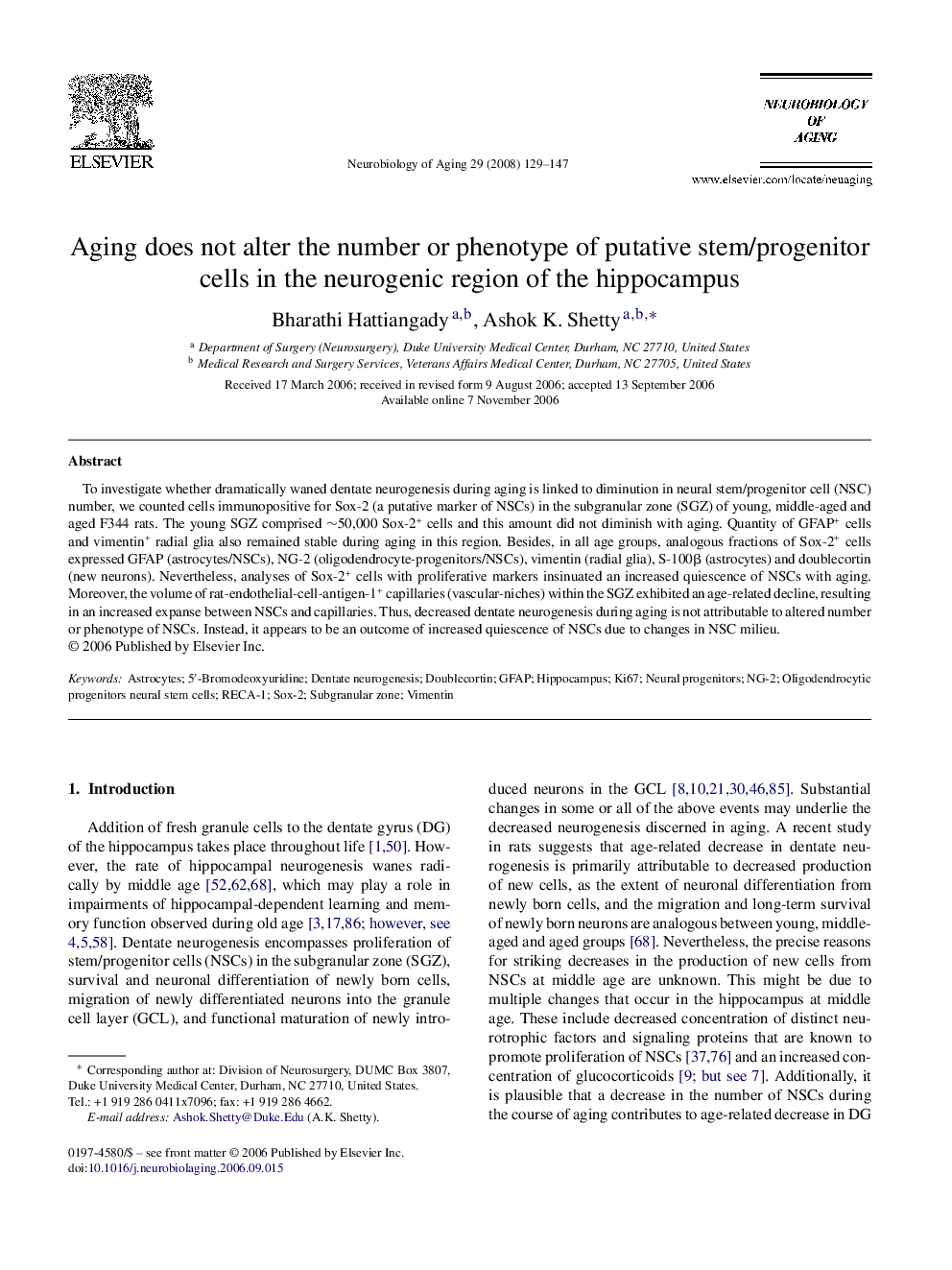| Article ID | Journal | Published Year | Pages | File Type |
|---|---|---|---|---|
| 331195 | Neurobiology of Aging | 2008 | 19 Pages |
To investigate whether dramatically waned dentate neurogenesis during aging is linked to diminution in neural stem/progenitor cell (NSC) number, we counted cells immunopositive for Sox-2 (a putative marker of NSCs) in the subgranular zone (SGZ) of young, middle-aged and aged F344 rats. The young SGZ comprised ∼50,000 Sox-2+ cells and this amount did not diminish with aging. Quantity of GFAP+ cells and vimentin+ radial glia also remained stable during aging in this region. Besides, in all age groups, analogous fractions of Sox-2+ cells expressed GFAP (astrocytes/NSCs), NG-2 (oligodendrocyte-progenitors/NSCs), vimentin (radial glia), S-100β (astrocytes) and doublecortin (new neurons). Nevertheless, analyses of Sox-2+ cells with proliferative markers insinuated an increased quiescence of NSCs with aging. Moreover, the volume of rat-endothelial-cell-antigen-1+ capillaries (vascular-niches) within the SGZ exhibited an age-related decline, resulting in an increased expanse between NSCs and capillaries. Thus, decreased dentate neurogenesis during aging is not attributable to altered number or phenotype of NSCs. Instead, it appears to be an outcome of increased quiescence of NSCs due to changes in NSC milieu.
